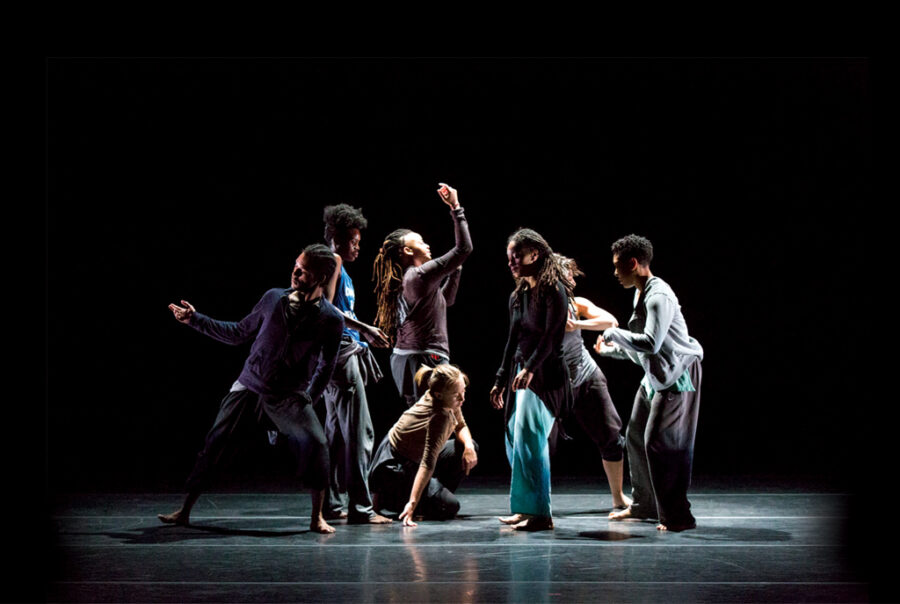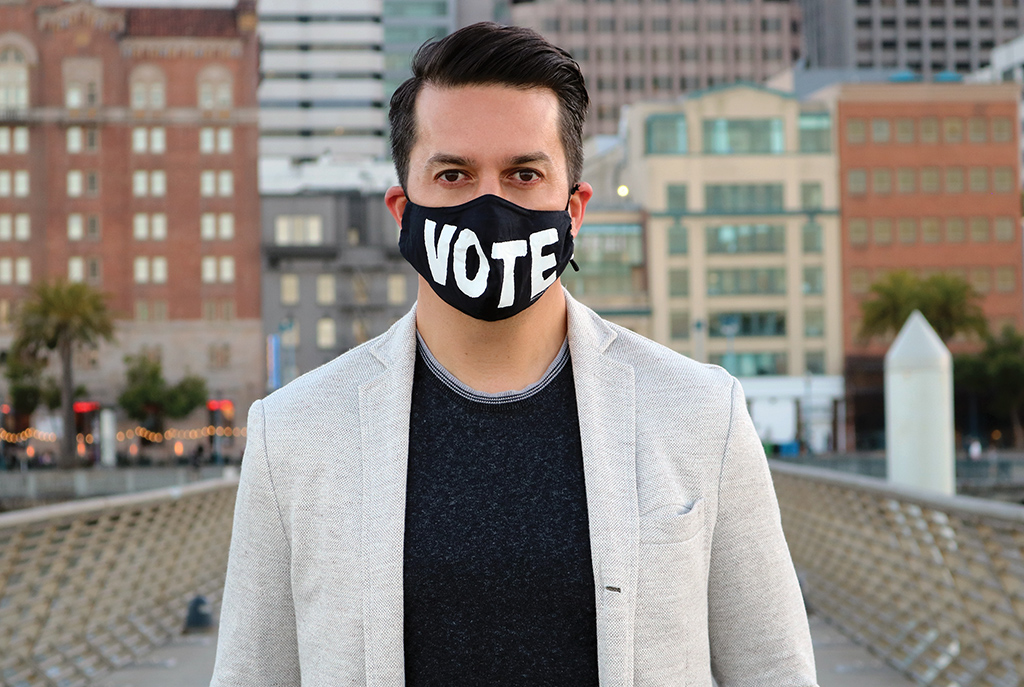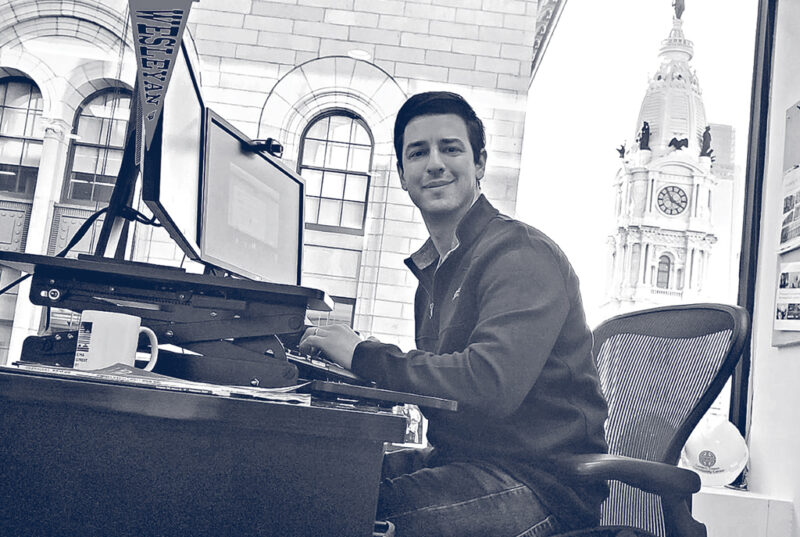CoDES: Bridging Art and Engineering
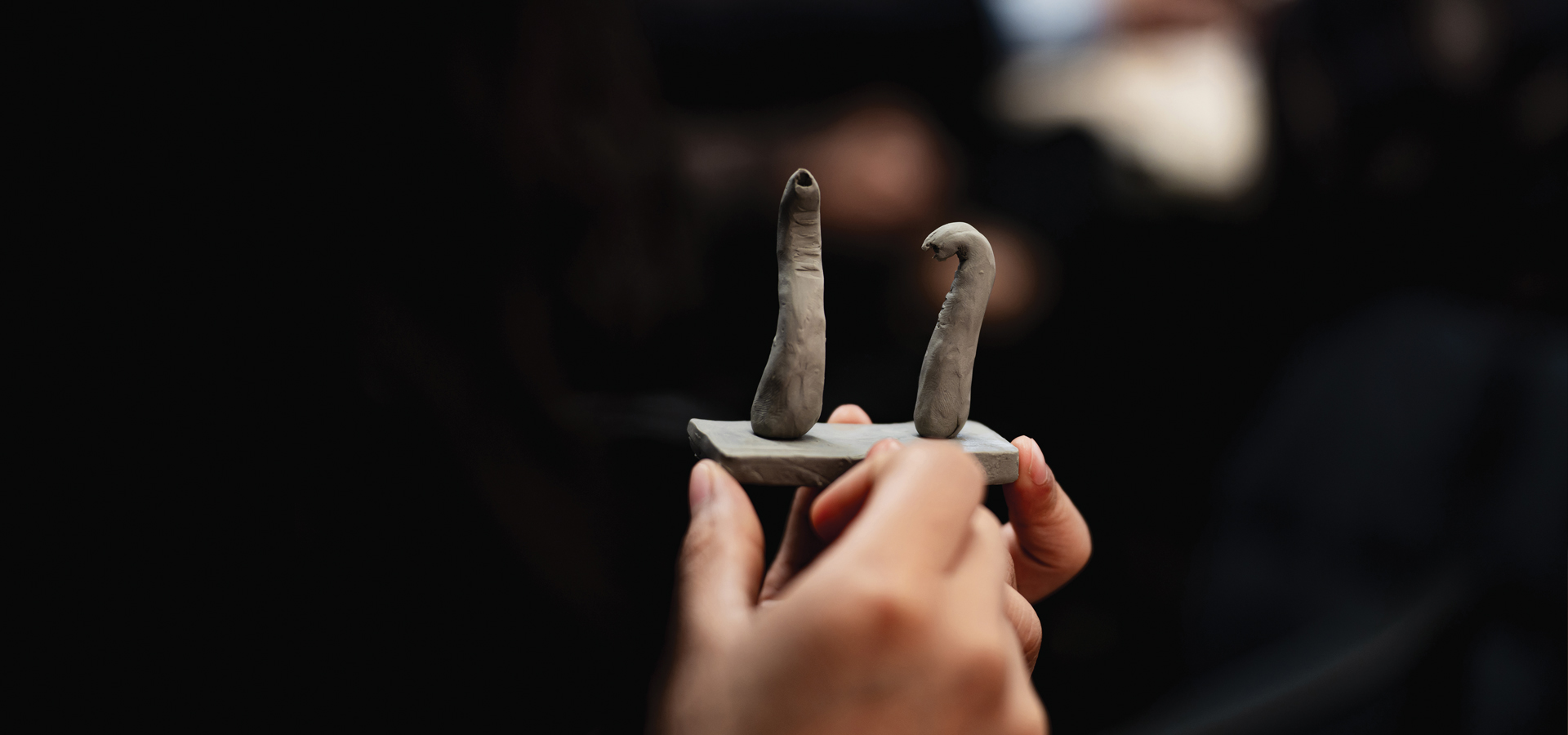
The new College of Design & Engineering Studies connects technology, creativity, and social science to help students address problems in an increasingly complex world
Inside Exley Science Center, Ford McDill ’25 stands before the class and holds up a lime green toy shaped like Mike Wazowski, a character from Pixar’s Monsters, Inc., that looks like it’s been pried from the jaws of a teething puppy. White stuffing leaks out of the slit where McDill has inserted the flash drive–sized sensor device. “I love juggling!” he declares.
As McDill tosses “Mike” in an arc from right hand to left with increasing speed, a line of data rises and falls on the graph projected behind him. The object bouncing between McDill’s hands is his final project for the Integrated Design, Engineering, Arts & Society (IDEAS) course, Introduction to Sensors, Measurement, and Data Analysis: a prototype of a juggling ball that transmits velocity data to a receiver connected to his computer and creates real-time analysis of his juggling patterns. For McDill, who is a computer science and mathematics double major and an IDEAS minor, the project combines his various skillsets to help improve his juggling technique. The laser engraving machines and belt sanders in the IDEAS lab are quiet as he recounts the setbacks paving the way to the prototype’s success, from learning a wireless communication protocol software to get the sensor to relay information quickly and consistently, to troubleshooting badly soldered wire connections on the morning of his end-of-semester presentation.

Around the lab, wire shelving units overflow with discarded prototypes, strange, barely identifiable objects that bear silent witness to the semester’s proceedings and student’s progress. In IDEAS courses, students are always reflecting on their failures (many) and successes (few). Setbacks are celebrated—fail early and fail often is their maxim—because it’s in failing that students learn resiliency and problem-solving strategies.
Wesleyan’s newest college, the College of Design & Engineering Studies (CoDES), launched in fall 2023 to host the design and engineering activity on campus and provide administrative support for the IDEAS linked major, IDEAS minor, and the engineering dual degree programs that offer students the opportunity to earn two bachelor degrees: a BA from Wesleyan and a BS (from California Institute of Technology or Columbia University) or a BE (from Dartmouth). Since the IDEAS minor was formally approved in May 2017, it has become the third-largest minor cohort on campus, with many students choosing to develop a University major inspired by the IDEAS curriculum. Establishing the college was the next institutional step to meet the growing demand for interdisciplinary courses that combined foundational design principles with artistic flexibility.
The unifying pedagogy of all CoDES courses is the iterative design process—a methodology of creating prototypes, testing, tweaking, and testing again. There is also a strong focus on collaborative, project-based learning, open-ended exploration, and critique.
The unifying pedagogy of all CoDES courses is the iterative design process—a methodology of creating prototypes, testing, tweaking, and testing again.
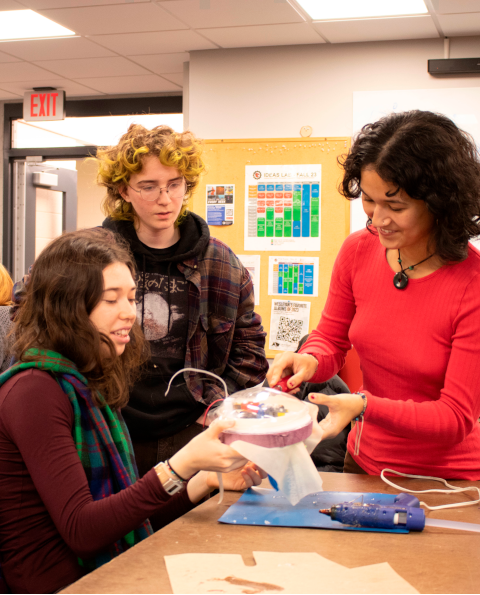
Design or engineering programs have not traditionally incorporated cross-pollination between artistic and technical fields with additional grounding in the social sciences. In this regard, CoDES helps Wesleyan stand out among peer institutions by offering a liberal arts education that integrates technological expertise, aesthetic understanding, and foundational instruction in ethics of social equity, mutual benefit, and reduced harm.
CoDES brings together faculty and students from the visual and performing arts side of campus who have traditionally operated out of the Center for the Arts, and the computer and physical science researchers with labs in Exley. The CoDES core faculty illustrate the uniquely interdisciplinary nature of the IDEAS program.
Professor Daniel Moller, associate professor of the practice in integrative sciences and a core CoDES faculty member, teaches several introductory courses in electrical and mechanical engineering—including McDill’s—in the IDEAS lab. He also joins Elijah Huge, associate professor of art and director of CoDES, in teaching the first major gateway course, Interdisciplinary IDEAS Project Lab, in spring 2024.
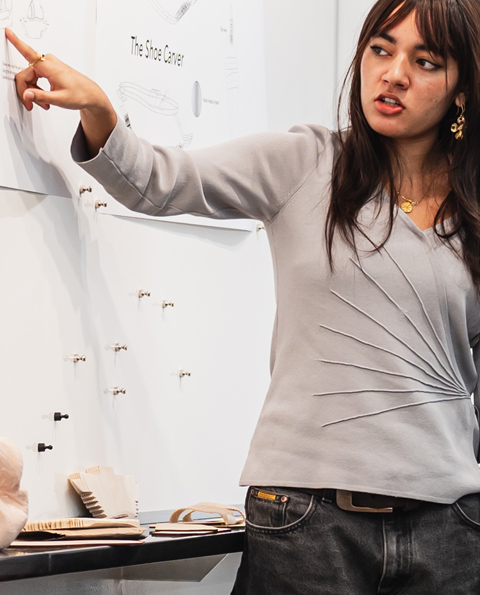
In Assistant Professor of Art Yu Nong Khew’s Product Design I course, students explore the iterative design process through the lens of biodegradable design. For their final project, they are tasked with designing a tool that could be used to shape Karshee, a sustainable, brick-like building material formed from salt, sand, and clay. Some prototypes were practical and ergonomic; hand tools custom-shaped to fit the user or adjustable boot attachments that resemble cleats. Other prototypes were interactive or dual-purpose, like the two-person handsaw where the blade resonates a musical note as it slides back and forth, or the salt block stand that can also be fitted with interchangeable blade attachments inspired by tools found in nature: an elephant’s trunk, a cat’s tongue, a raptor’s beak.
Khew, who joined the University in fall 2022, is one of the newest CoDES core faculty members. She hopes students walk away from her class with a greater appreciation for interdisciplinary coursework, and the confidence to declare an IDEAS minor or major.
The CoDES student cohort is diverse in their academic interests, combining coursework from a broad range of disciplines. The new IDEAS linked major will provide even more opportunities for students who want to challenge their ways of thinking.
CoDES helps Wesleyan stand out among peer institutions by offering a liberal arts education that integrates technological expertise, aesthetic understanding, and foundational instruction in ethics of social equity, mutual benefit, and reduced harm.
Mariko Tanaka ’24 is a College of East Asian Studies (CEAS) major, IDEAS minor, and middle blocker for the Cardinals volleyball team. “IDEAS is a little scary to some people because it is something completely new,” she said. But for Tanaka, that was the appeal.
“When I took Moller’s class my sophomore year, I was so excited because my group built a 2D printer.” However, the design process was not an easy win for Tanaka’s group. “Being an athlete, you learn never to give up,” Tanaka said. “You have to continue to get better. When [the 2D printer] finally worked it was very satisfying. It was the hardest thing I’ve done in my time at Wesleyan.”
Aaron Berson ’24, a neuroscience and behavior major and IDEAS minor, says the skills he’s learned in CoDES courses—specifically programming and sensor development—have enhanced his research experiments on ALS with Professors Alison O’Neil and Aaron Gloster. “The IDEAS program has pushed me to creatively assess the brain’s microscopic systems and critically think about how we can engineer them.” Berson hopes to enter a PhD program where he can pursue this line of research by creating neural interfaces that restore functions in patients with neurological disorders.
In the spring of 2023, Berson presented “LISTEN,” an interactive light exhibition in the Digital Design Commons. The public exhibit was the culmination of Berson’s individual tutorial with Moller, with additional support from Pedro Bermudez, assistant professor of the practice in video and audio production. Berson used custom sensors, microcontrollers, and code to illustrate an internal biological phenomenon: as two blindfolded participants listened to the same story, the room’s brightness was designed to automatically increase as their heart rates synced, creating a visual experience for the audience based on the internal experience of the participants. “As someone who works most days at a lab bench, this project was a passion project of mine to create a space for people from all walks of life to have a discourse about science with one another and critically analyze what is typically sequestered to scientific journals.”
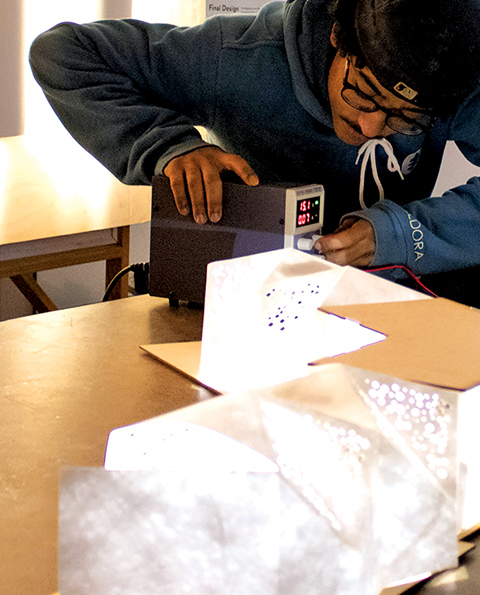
The overarching goal of CoDES is to teach students how to look at complex technological and artistic problems from varied perspectives and provide a pathway for them to pursue interdisciplinary work in their careers post-graduation. “A student who is interested in being an artist, but also wants to learn about engineering, the sciences, or the social sciences, can do so,” says Elijah Huge, CoDES director. “It is about building a conversation across disciplines.”
CoDES currently has no centralized space on campus for facilities, classrooms, or faculty offices. Huge hopes this will one day change, but for now the wide range of project work requirements in CoDES courses means you might find some students and faculty working in the state-of-the-art makerspace or motion capture studio currently being constructed within the historic Alsop House or the dedicated IDEAS lab in the basement of Exley.
BACK IN THE IDEAS LAB, the student presentations continue and Moller asks the occasional leading question to help students elaborate on their design processes and testing protocols. Some demos go off without a hitch—but more often than not things break right before class or fail to perform in front of the group.
Moller reminds his students that regardless of whether their prototype worked as planned, they’ve all gained a better understanding of the mechanics behind the everyday technology we take for granted—wireless signals, voice recognition, image analysis, motion sensors. “Understanding the fundamentals is really powerful to gain an understanding of the complexity of the world around us,” he says.
McDill is undaunted by his soldering setbacks. He’s got plans to return to the lab next semester and design an even flashier juggling ball with sound and light effects. CoDES courses have made it possible for him to juggle multiple subjects of interest while sharing his passion with others.
Top photo: For her Product Design I final project, Xiran Tan ’24 designed a salt block shaving tool with interchangeable blade attachments inspired by tools found in nature, such as elephant trunks, raptor beaks, and claws. Photo by Meka Wilson

